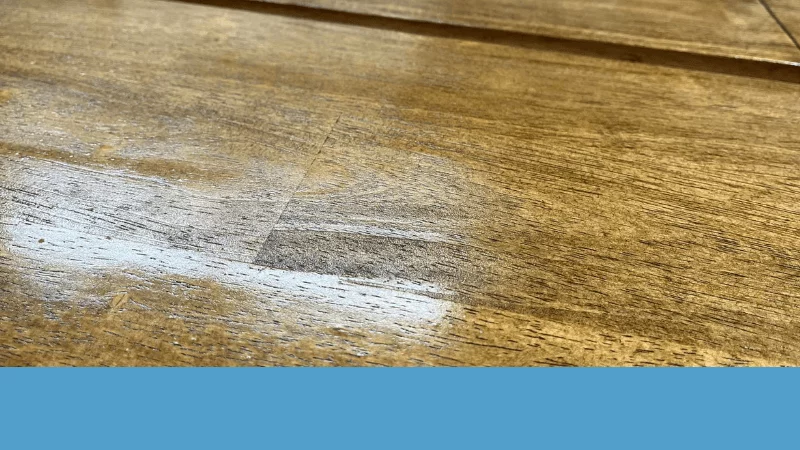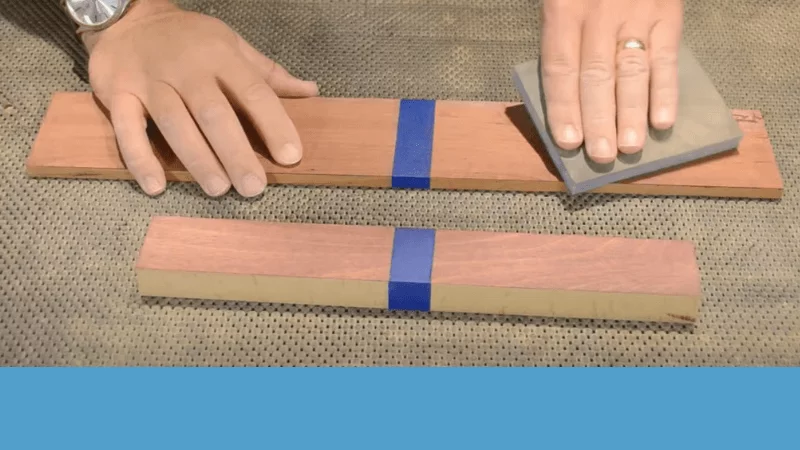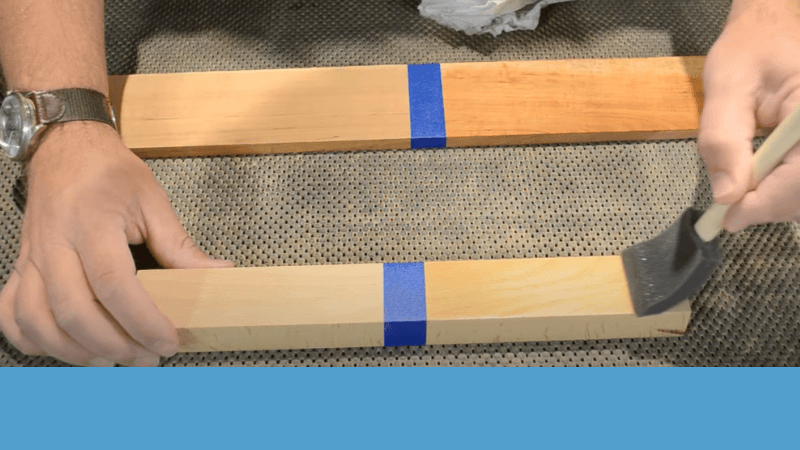If your wood feels a little rough after staining, then you may have fallen for one of the most notorious booty traps in the woodworking world – raised grain. But fear not! This article will answer all your questions about raised grain, including why it’s often the culprit of water-based finish products.
Recommended Reading
How Many Coats of Stain on a table
So, what exactly is raised grain?
It’s when the wood fibers swell and become rough after being exposed to moisture. And since water-based finishes contain a higher amount of moisture, they tend to aggravate raised grain more than other types of finishes.
However, according to Bob Flexner, Water based finishes aren’t the only culprits. As he explains in the Bible of wood finishing, “Alcohol-NGR-dye stains will also raise the grain a little if the stain is applied wet.”

Why Wood Becomes Rough After Staining
When wood comes into contact with water or any stain or finish that contains water, the wood fibers start to swell. As the water or stain dries, the swollen fibers will become rigid, and this can cause the wood to feel rough to the touch.
Even if the wood is sanded to a smooth finish before staining, raised grain can still occur. This is because the water-based product will inevitably come into contact with the wood, causing the fibers to swell.
Thinly applied finishes will also feel rough. Therefore, it is important to deal with raised grain to achieve a smooth and even finish.
How to Prevent Roughness After Staining
Sand off the raised grain

Preventing roughness after staining involves proper preparation, application, and maintenance of the wood. One effective method is to lightly sand off the raised grain with used 320-grit sandpaper before staining. Used sandpaper is better as it’s less aggressive. Remember we are only so slightly sanding just enough to knock the whiskers down. Be careful not to sand through the surface or remove too much of the stain. If you do sand through, reapply the stain over the entire surface and wipe off the excess to ensure an even finish.
Other tips to prevent roughness after staining
Properly preparing the wood by removing any dirt, dust, or debris, and ensuring that the wood is dry and free of moisture. You could aslo choose oil-based stains since there is no risk of raised grain. On the other hand, water-based stains contain high amounts of moisture, which leads to raised grain.
De-whiskering

De-whiskering is a technique that can help you achieve a smoother finish on your water-based stained wood. The process involves sanding the wood to about 150-180 grit and then wetting it with a sponge or cloth just short of puddling. This causes the wood fibers to swell and raise up, which can create a rough and uneven surface. After letting the wood dry for several hours or overnight, you’ll need to sand the raised grain smooth with the same grit sandpaper you used last, or a one-numbered grit finer. here is a video of the process.
How to Fix Rough Wood: Conclusion
Raised grain is a common problem when staining wood, and it’s often caused by water-based finishes. To prevent roughness after staining, it’s important to sand off the raised grain staining. De-whiskering can also help achieve a smoother finish. Overall, with proper preparation and techniques, roughness after staining can be prevented, and you can achieve a smooth and even finish on your woodwork projects.